The No. 1 Sign There’s a Snake in Your Kitchen
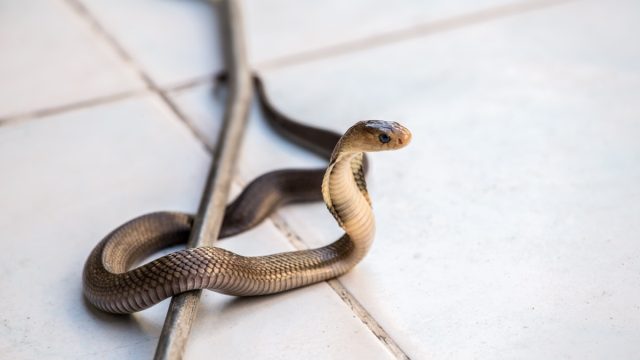
Snakes sure like to worm their way inside your home. They tuck away in your attic. They hide in your basement. And in some instances, they get you right where you think you’re safest: your kitchen. “Since their presence is difficult to detect yet they attack when they feel threatened, snakes in kitchens put house residents at risk,” says Sholom Rosenbloom, the owner of Rosenbloom Pest Control. “Though bites from non-venomous species will simply hurt for a few days, those received from venomous snakes can be deadly.” What’s more, since there are so many hiding spots—in cabinets, under appliances—it isn’t always easy to know if you’ve got a snake problem in your kitchen. But there are a few surefire signs. Read on to learn from experts about the number-one sign there’s a snake in your kitchen.
READ THIS NEXT: The No. 1 Sign There’s a Snake in Your Car.
This is why snakes hide in the kitchen.
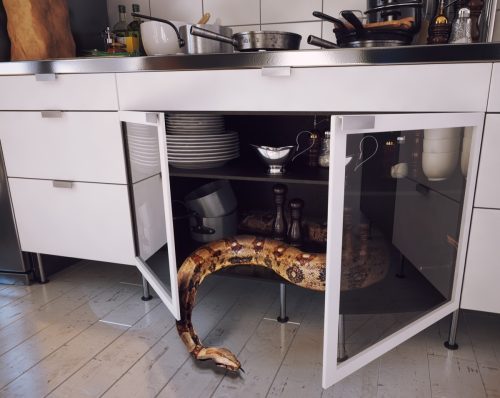
Snakes love hiding in the kitchen for the same reason you do: It’s warm, it offers shelter, and there’s (probably) food there. This isn’t to say snakes like eating your food, per se, but rather that your pantry could attract mice and other small pests—stuff that is snakes’ “actual favorite food,” according to Sabrina Kong, DVM at We Love Doodles.
Snakes also prefer non-lit areas. “Snakes might be attracted to your kitchen due to the prevalence of tight, dark places to hide, along with the warmth provided behind a refrigerator or other appliances,” adds Josh Snead, CEO of Rainwalk Pet Insurance.
For more snake advice delivered straight to your inbox, sign up for our daily newsletter.
But you’re more likely to spot them at certain times of the year.
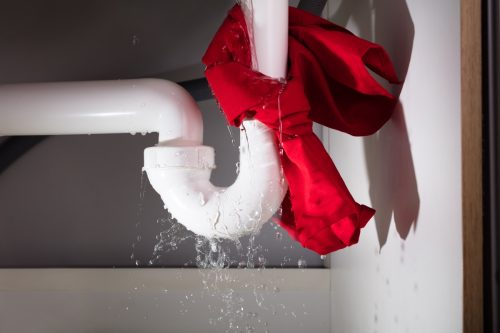
Snakes in the kitchen are not a risk you need to be on your toes about all year round, since there’s a seasonality factor to consider. As snakes are cold-blooded, they seek out external sources of warmth during the winter.
“Snakes are most likely to infiltrate your kitchen during the colder months of the year, which can vary depending on where you live, but for most parts of the United States, it would be anywhere starting from September to December and ending around March or April,” Kong explains.
Finding a snake indoors during the summer isn’t unheard of, however. “Cool and damp spaces, such as the undersides of sinks with leaky pipes, help snakes regulate their temperature during unbearably hot summers,” Rosenbloom notes.
Here’s how to tell a snake is in your kitchen.
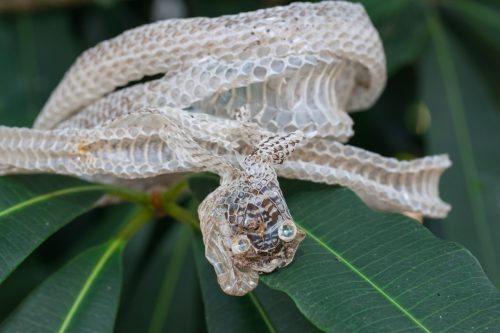
“Young snakes, and other small snakes, can be nearly impossible to locate in a kitchen,” a veterinarian tells Best Life. “However, consider looking near any warmer area of the kitchen.” (Remember, if they’re in your house, they’re looking for warmth.)
But the number-one way to spot a snake in this part of the house is to keep an eye out for the most obvious signs: snake droppings (which look like this) or shedded skin (a bit easier to spot, this is a paper-thin exoskeleton in snake form). These are bodily functions that snakes can’t help, so they’re the clearest indicator that a pest is hiding in your kitchen.
You also might hear it before you see it. “Snakes are great at hiding, thanks to their slender and flexible bodies, but they make a lot of noise,” notes Erika Barnes, founder and CEO of PetSmitten.
If all else fails, there’s a more creative sleuthing method. If you suspect a snake is in your kitchen, lay some flour on the floor, with a concentration near appliances, floorboards, and other spots a snake could sneak into. Come morning, if there are any slithery tracks in the flour, that’s a dead giveaway. If you have pets, make sure you keep them out of the kitchen overnight, as they could spread the flour or stumble upon the snake.
READ THIS NEXT: The First Place You Should Check for a Snake in Your Home, Experts Say.
And here’s what to do if there is a snake in your kitchen.
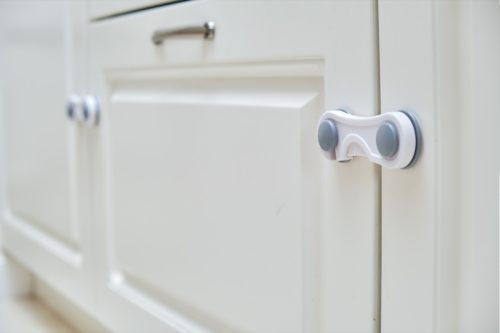
Finding a snake in your yard or under your porch has an easy solution: Stay away. Indoors, however, is a different story. It’s a bit tougher to run away from something that’s inside your home.
If you can, close off your kitchen. If you can’t, be sure to keep away, and do the same for any children and pets. Hiding up the stairs, a snake’s greatest foe, is a good idea. It’s hard to tell for sure whether or not a snake is venomous, so Rosenbloom suggests calling a local pest control agency immediately.
Going forward, be sure to take preventative measures. Snakes prefer a dirty environment, so an easy solution is to keep your kitchen clean. Also take note of how the snake entered in the first place—through a cracked foundation, in an opening near a door or window, or even up a toilet—and take the proper steps to seal those places off.